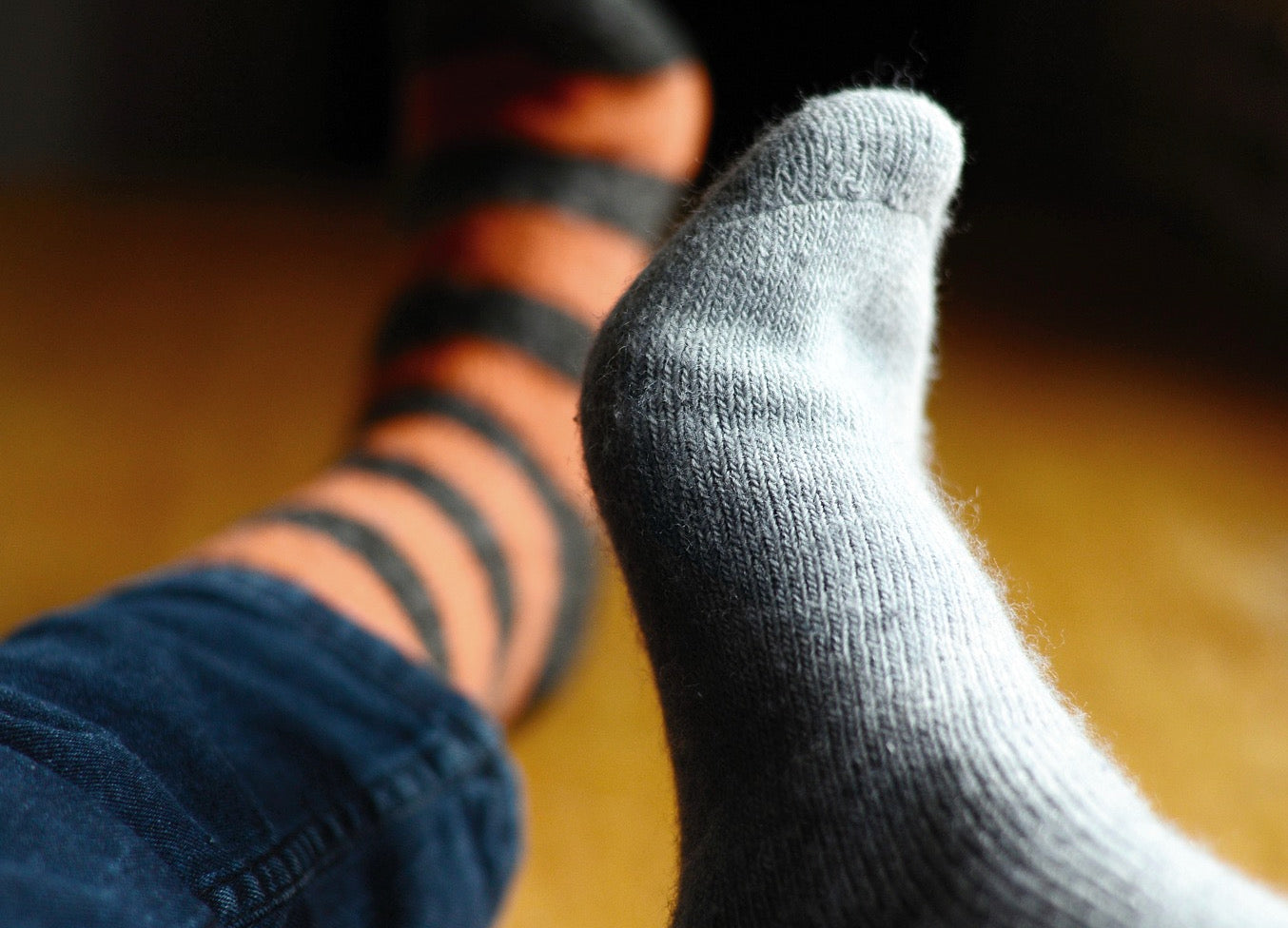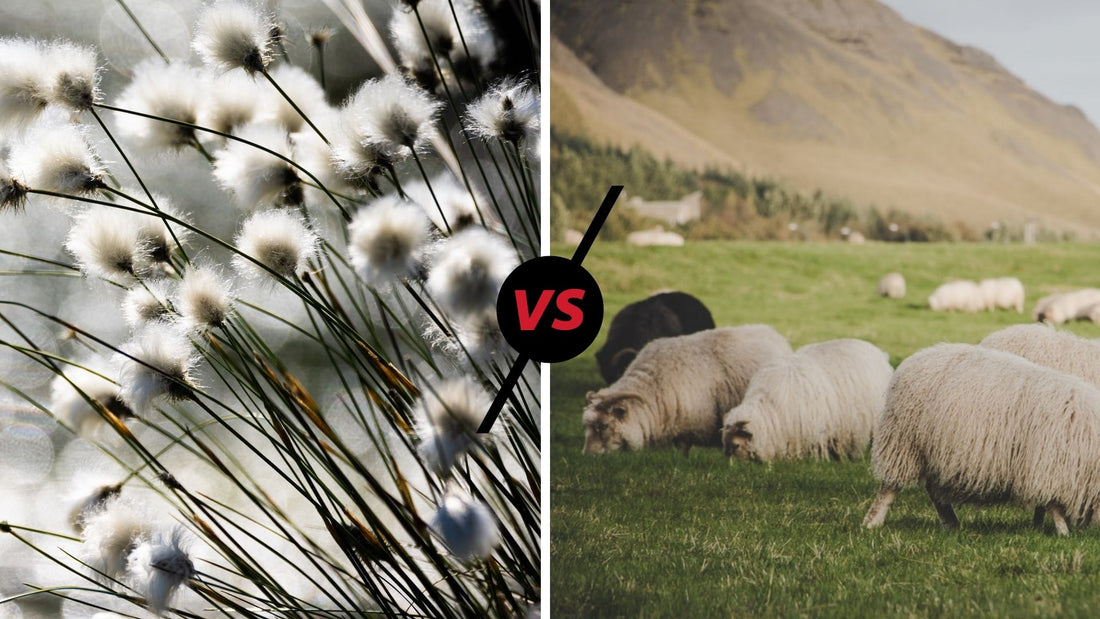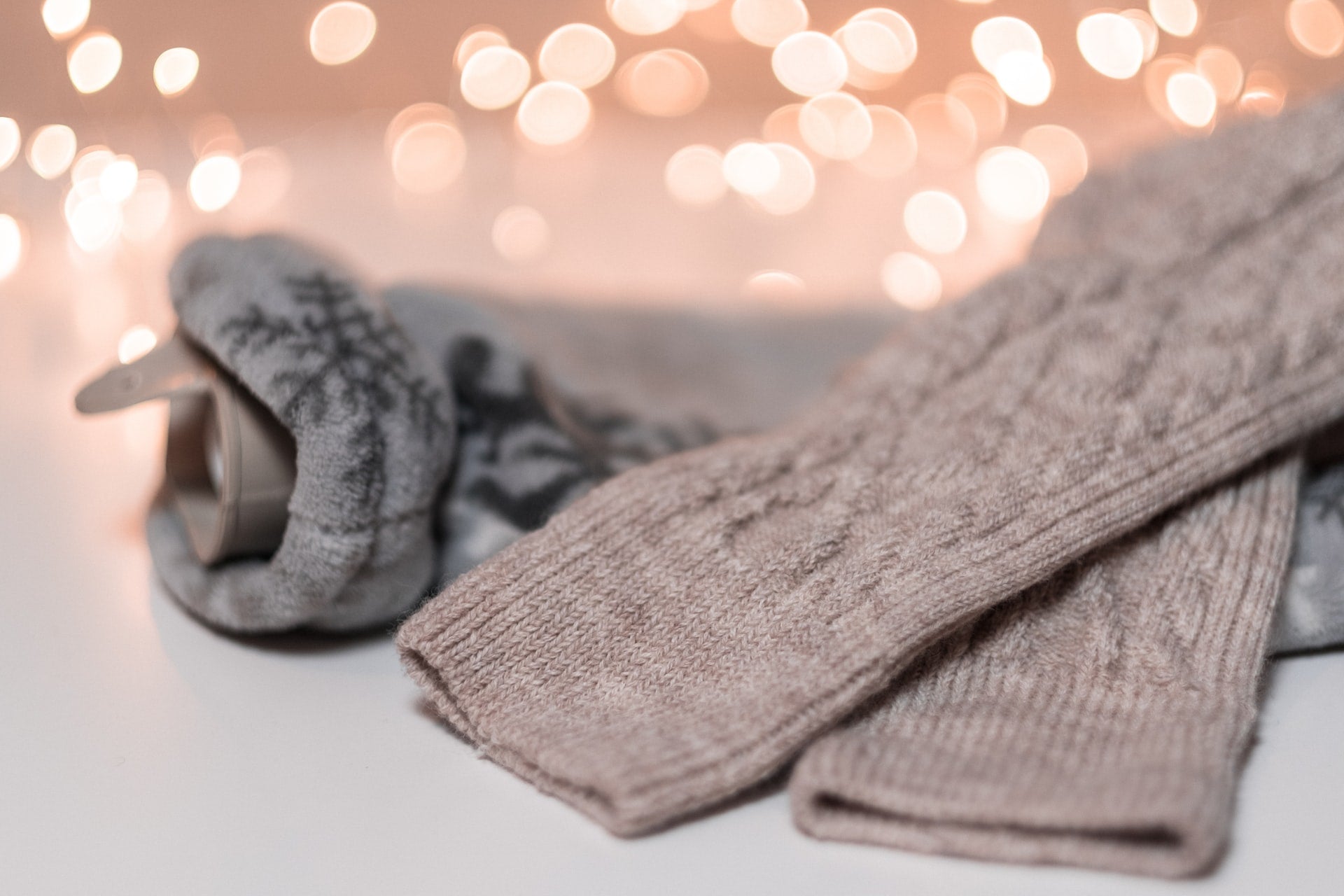Chaussettes. Socken. Calzini. Skarpety. It doesn’t matter the language you use, what your feet are probably thinking about today… is socks. Ok, obviously feet don’t think. But let’s face it, with a world of worries to concern yourself over, it’s too easy to overlook your hard-working feet.
Since those unsung heroes take you from A to B, holding the brunt of your weight from dawn to dusk, we suggest one simple thing: spare the care of some thought to the socks you choose each morning.
And with the autumn chill waiting around the corner, what should you be putting on your feet as the season turns?
Well, we thought we’d take this opportunity to discuss the humble sock and the differences between fan-favourites cotton and wool.

Cotton socks, the basics
For many, the cotton sock is the weapon of choice. It has been at the very fibre of sock creation since the seventeenth century (pun absolutely intended). It’s breathable, soft and the superior choice if you have sensitive feet.
With the industrial revolution in the eighteenth century, hand knitting workers were replaced by circular looms. This sent production rates soaring, and the cotton sock became an everyday necessity for comfort and hygiene.
Cotton seems to be quite clearly an obvious frontrunner as our summer companion, although like most, you are probably wearing them all year round. It’s convenient to do so, but are we perhaps missing the secret of the “seasonal sock”?
Sadly, when wet, our cotton comrades lose all their insulating properties. You may even feel like it wasn’t worth bothering to wear them at all. If that soggy squelch isn’t a result of a torrid river or a hole in your walking boots, it’s likely because your feet have perspired. How delightful.
Wool socks, the basics
As your winter warmers find their way out from storage and back into your wardrobe, perhaps you should consider pairing them with the often-understated woollen sock? We think that sounds positively cosy.
Our sheep-sheared saviours are a fantastic insulator (and at SocksFox, it is something we definitely bleet on about!). Because of the nature of its composition, wool has some surprising qualities that make it far more versatile than most people realise.
Wool fibres have naturally anti-bacterial properties which make them odour resistant. They maintain their insulating properties even when wet, and can also absorb a high amount of moisture.
It won’t matter if you’re trudging through mud and snow, or simply padding about on cold stone floors in your cottage or a ski lodge, you’ll feel as warm on the inside as your happy feet!
Fighting Fast Fashion
It sounds as if we are sock connoisseurs… and we are. But we are only just getting started.
Whilst retailers sell multipacks of a polyblend mix for next to nothing, we’re seeing a welcome shift in perceptions; a rise in people who care about quality over quantity. Perhaps you’re one of them? (If you’re here, we’re guessing you are!).
The debate surrounding fast fashion has everyone more conscious about their clothes – their lifespan, what they’re made from. The game really is afoot, and we’re here to play our part in helping you understand what makes the best choice for your feet.

One Size Fits All?
On the surface, wool sounds like the ultimate gold standard for socks, however, there are some downsides to consider.
- Woollen socks require more dutiful care on your part (handwashing and drying while laid out flat, for instance).
- If you wear wool socks for too long while walking on carpet, you’ll reduce their lifespan courtesy of built-up friction.
- Find yourself with a pair of socks made from low-grade wool and you’ll soon be struggling to resist the itch.
All that setting aside the fact that you’ll hardly want such a thick layer on your feet during the warmer months!
Cotton vs Wool, in the eyes of the environment
By now, we’re hoping you’ve got a strong idea that both cotton and wool socks have their rightful place in your drawers and on your toes.
But how do they step up environmentally? What if you’re concerned with more than how your socks look and feel?
The Environmental Justice Foundation reported that cotton production globally contributes 220 million tonnes of CO2 per annum. Cotton is quite thirsty too (so are sheep, but bear with us), so the water footprint is roughly recorded at 233 billion cubic metres a year. For perspective, that is equivalent to 238 bathtubs per person every year.
Compared to conventional cotton, organic cotton requires 85% less water because of the natural crop treatments. And although more expensive than wool, it is far more readily available.
So, what spin does wool take on the environmental tale?
Wool is a 100% natural, renewable and biodegradable fibre that uses 70% less water than cotton in its production. Being a hard-wearing fibre, it is also likely to last longer than its cotton counterpart. So, if it goes further and costs less to make… does that make wool our winner?
The Best of Both Worlds?
Sure, you could stand by cotton or wool devoutly, we're not going to stop you. But why settle when you don't have to?
Plenty of socks offer a regal blend of both materials to bring you the best from each side. This innovative combo comprising an outer layer of premium wool and the softest skin-friendly cotton on the inside is, understandably, one of the most popular socks we've ever stocked here at SocksFox.
We'd be remiss not to mention the fabulous Falke brand at this point, who we consider genuine sock artisans. They've absolutely perfected the art of blending cotton and wool to bring you unmatched comfort and temperature regulation in one unbeatable business sock.
In Conclusion
Like an outfit, socks should match every occasion and mood. Just as important though, is considering which fibre suits your wallet, your lifestyle and your ecological conscience. Trust us, there is a sock for every season and for everyone.









